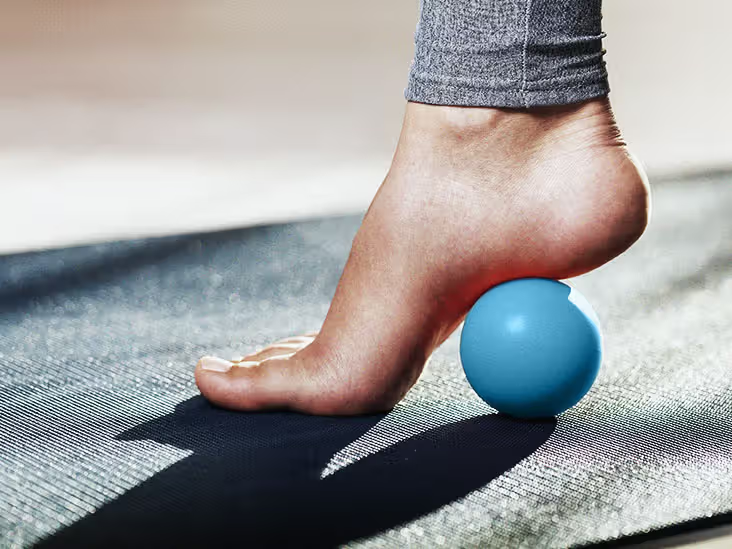Heel pain is a common condition that can affect people of all ages and activity levels. It can interfere with routine activities, from walking and standing to participating in sports and exercise. The discomfort may manifest as a sharp, stabbing sensation, particularly in the morning, or as a dull ache that persists throughout the day.
What Causes Heel Pain?
Several factors can contribute to the development of heel pain. The most frequent cause is plantar fasciitis, a condition involving the thick band of tissue, known as the plantar fascia, that runs across the bottom of the foot, connecting the heel bone to the toes. When this tissue becomes strained, it may lead to discomfort. Overuse or repetitive strain can cause this tendon to become painful and stiff. General overuse from prolonged standing, walking, or running may also strain the foot, leading to heel pain.
What Exercises Manage It?
Specific exercises and stretching techniques can help manage the symptoms associated with heel pain by improving flexibility and strength in the foot and lower leg. Performing a gentle warm-up before stretching may be helpful. Some notable stretches include:
- Calf Wall Stretch: Stand facing a wall with your hands placed on it for support. Step one foot back, keeping the leg straight and the heel on the floor. Gently lean forward until you feel a stretch in your calf. Hold this position for 15–30 seconds and repeat on each leg.
- Plantar Fascia Stretch: While seated, cross one leg over the other. Use your hand to gently pull your big toe back toward your shin until you feel a stretch along the bottom of your foot. Hold for 15–30 seconds and perform three repetitions on each foot.
- Rolling Arch Massage: Sit in a chair and place a chilled water bottle or a foam roller under your foot. Gently roll your foot back and forth over the object for about one minute to massage the arch. This can be done several times a day.
These exercises can often be performed daily. Progression should be gradual, avoiding any movements that cause sharp pain.
How Is It Medically Treated?
When self-care measures do not provide sufficient relief, a clinician can offer a structured treatment plan. A common first step is activity modification, which involves reducing or temporarily stopping activities that aggravate the heel. A healthcare professional may also provide footwear guidance. Orthotics, which are custom or over-the-counter shoe inserts, may be suggested to help correct biomechanical imbalances and give support to the arch.
A clinician might discuss the use of non-steroidal anti-inflammatory drugs (NSAIDs) to manage discomfort. In some cases, other in-clinic modalities may be presented as options. These can include treatments like extracorporeal shockwave therapy.
Speak Further With a Podiatrist
If you are experiencing persistent heel pain, consulting a podiatrist or another qualified healthcare professional is a constructive next step. A specialist can perform a thorough evaluation to determine the specific cause of your discomfort and develop a personalized management plan. To prepare for your appointment, it is helpful to track your symptoms, noting when the pain occurs and what activities make it better or worse. This information will help your provider provide guidance tailored to your needs.


